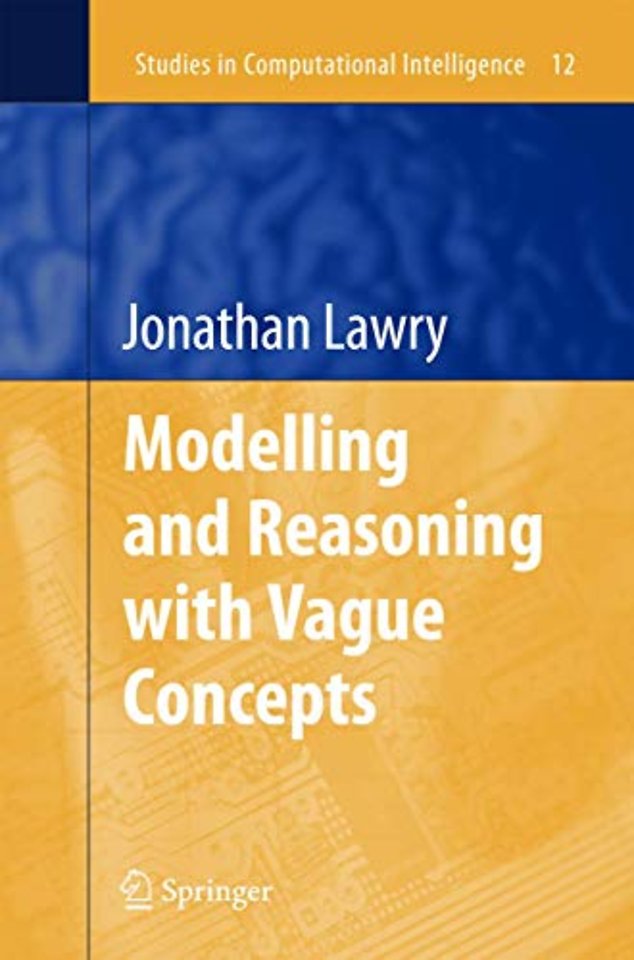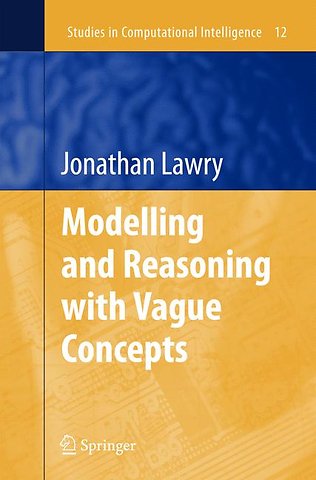Modelling and Reasoning with Vague Concepts
Gebonden Engels 2006 2006e druk 9780387290560Samenvatting
This volume introduces a formal representation framework for modelling and reasoning, that allows us to quantify the uncertainty inherent in the use of vague descriptions to convey information between intelligent agents. This can then be applied across a range of applications areas in automated reasoning and learning. The utility of the framework is demonstrated by applying it to problems in data analysis where the aim is to infer effective and informative models expressed as logical rules and relations involving vague concept descriptions. The author also introduces a number of learning algorithms within the framework that can be used for both classification and prediction (regression) problems. It is shown how models of this kind can be fused with qualitative background knowledge such as that provided by domain experts. The proposed algorithms will be compared with existing learning methods on a range of benchmark databases such as those from the UCI repository.
Specificaties
Lezersrecensies
Inhoudsopgave
Preface
Acknowledgments
Foreword
1: Introduction
2: Vague Concepts And Fuzzy Sets
2.1 Fuzzy Set Theory
2.2 Functionality and Truth-Functionality
2.3 Operational Semantics for Membership Functions
3: Label Semantics
3.1 Introduction and Motivation
3.2 Appropriateness Measures and Mass Assignments on Labels
3.3 Label Expressions and lambda-Sets
3.4 A Voting Model for Label Semantics
3.5 Properties of Appropriateness Measures
3.6 Functional Label Semantics
3.7 Relating Appropriateness Measures to Dempster-Shafer Theory
3.8 Mass Selection Functions based on t-norms
3.9 Alternative Mass Selection Functions
3.10 An Axiomatic Approach to Appropriateness Measures
3.11 Label Semantics as a Model of Assertions
3.12 Relating Label Semantics to Existing Theories of Vagueness
4: Multi-Dimensional And Multi-Instance Label Semantics
4.1 Descriptions Based on Many Attributes
4.2 Multi-dimensional Label Expressions and A-Sets
4.3 Properties of Multi-dimensional Appropriateness Measures
4.4 Describing Multiple Objects
5: Information From Vague Concepts
5.1 Possibility Theory
5.2 The Probability of Fuzzy Sets
5.3 Bayesian Conditioning in Label Semantics
5.4 Possibilistic Conditioning in Label Semantics
5.5 Matching Concepts
5.6 Conditioning From Mass Assignments in Label Semantics
6: Learning Linguistic Models From Data
6.1 Defining Labels for Data Modelling
6.2 Bayesian Classification using Mass Relations
6.3 Prediction using Mass Relations
6.4 Qualitative Information from Mass Relations
6.5 Learning Linguistic Decision Trees
6.6 Prediction using Decision Trees
6.7 Query evaluation and Inference from Linguistic Decision Trees
7: Fusing Knowledge And Data
7.1 From Label Expressions to Informative Priors
7.2 Combining Label Expressions with Data
8: Non-Additive Appropriateness Measures
8.1 Properties of Generalised Appropriateness Measures
8.2 Possibilstic Appropriateness Measures
8.3 An Axiomatic Approach to Generalised Appropriateness Measures
8.4 The Law of Excluded Middle
References
Index
Rubrieken
- advisering
- algemeen management
- coaching en trainen
- communicatie en media
- economie
- financieel management
- inkoop en logistiek
- internet en social media
- it-management / ict
- juridisch
- leiderschap
- marketing
- mens en maatschappij
- non-profit
- ondernemen
- organisatiekunde
- personal finance
- personeelsmanagement
- persoonlijke effectiviteit
- projectmanagement
- psychologie
- reclame en verkoop
- strategisch management
- verandermanagement
- werk en loopbaan

